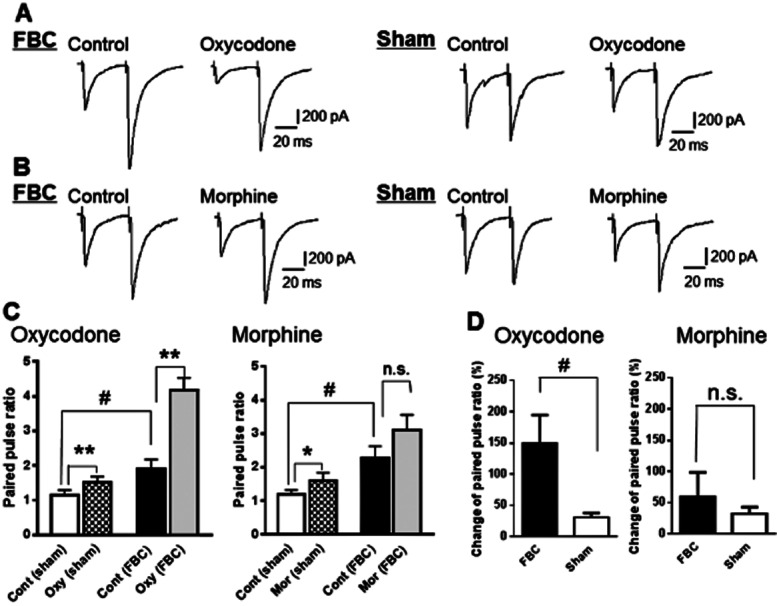Figure 5.

The PPR constructed by two successive GABAergic eIPSCs was increased in the FBC model as compared with sham-operated mice, and oxycodone potently increased the PPR in the FBC model. (A) A representative trace showing that oxycodone (10 μM) potently reduced the first amplitude of GABAergic eIPSCs, resulting in an increase in the PPR in slices of the FBC model. This effect was greater in the FBC model compared with that in sham-operated mice. (B) A representative trace showing that morphine (10 μM) reduced the first amplitude of GABAergic eIPSCs, resulting in a slight increase in the PPR in slices of the FBC model and sham-operated mice. (C) Summary graphs showing a significant increment of the PPR in the FBC model compared with sham-operated mice, indicated by sharp. Each column represents means ± SEM (n = 6 or 7). Oxycodone (10 μM) significantly changed the PPR in the FBC model while morphine(10 μM) induced slight changes in PPR, indicated by asterisk. (D) The increment of PPR by oxycodone (10 μM) was enhanced in the FBC model while that by morphine (10 μM) was not significantly different between the FBC model and sham-operated mice. The sharp indicates a statistically significant difference between the sham-operated mice and the FBC model groups, as determined by Student's t-test (two-tailed, #P < 0.05). The asterisk indicates a statistically significant difference between pre-treatment (control; cont) and post-treatment with each drug in the FBC model and sham-operated mice, as determined by paired t-test (two-tailed, *P < 0.05, **P < 0.01).
